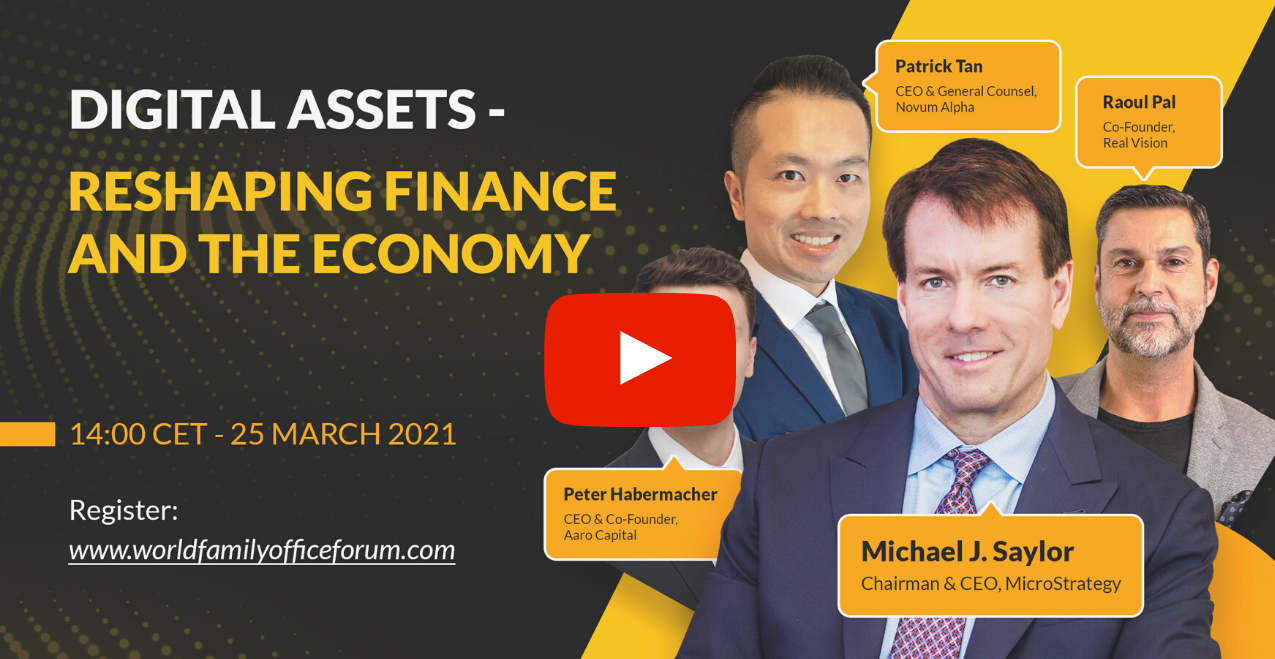Novum Alpha - Daily Analysis 7 May 2021 (10-Minute Read)
Stocks rallied in the last hour of trading as investors gorged on shares from consumer staples to banks, technology companies to energy firms.
|
A fabulous Friday to you as the weekend comes hurtling round the corner.
In brief (TL:DR)
|
 |
In today's issue...
|
Market OverviewYou can't deny the good data, but good data doesn't always translate to higher equity prices.
It did so yesterday though, with a late session turnaround in U.S. equities following upbeat corporate earnings and signs of continued improvement in the labor market powering indices to fresh highs.
Stocks rallied in the last hour of trading as investors gorged on shares from consumer staples to banks, technology companies to energy firms.
Can the rally have even more legs?
The assumption is that a finite number of dollars can only chase a finite number of trades, investors are assuming that dollars from high-growth tech stocks will be redirected to so-called "value" plays or those which are more sensitive to economic cycles.
But with the liquidity taps still flowing, the pie is big enough for everyone at the moment, with a broad wave of investor dollars chasing every single sector.
Some of those dollars are making their way into the Asian trade with Tokyo's Nikkei 225 (+0.23%), Seoul's Kospi Index (+0.55%), Hong Kong's Hang Seng Index (+0.73%) and Sydney’s ASX 200 (+0.41%) all higher at the open on a weaker dollar and strong demand prospects from the U.S.
|
|
Did you miss us at the World Family Office Forum? Watch it here...
|
 |
 |
 |
 |
|
1. Make More Chips Again
By now most investors would already have become familiar with the acute shortage of microchips or semiconductors, roiling already frayed supply lines across the world and threatening to put a damper in the nascent economic recovery.
Just as consumption in the U.S. is picking up, a shortage of chips is disrupting production of pickups and SUVs at Ford (+1.12%), and forcing Apple (+1.28%) to concede that the second quarter could see supply-side shortages for its Mac computers, which have been hot sellers in the shift to work from home.
But why can’t we just make more chips?
For starters, making chips is a horrendously complex manufacturing process that just keeps getting more difficult.
Making a chip typically takes over three months, involves giant factories, dust-free rooms, multi-million-dollar machines, molten tin and lasers, lots of lasers.
The end goal of course is to convert sand in the form of silicon wafers into a network of billions of tiny switches called transistors (hence the term “semiconductor”) to form the basis of the circuitry that will eventually make our devices, appliances and automobiles “smart.”
Think of transistors very simply as a switch that can be on and off, while amplifying that signal at the same time.
By simply going “ON” or “OFF” a transistor can be combined with other transistors to solve a multitude of computing and logical problems and the more transistors on a chip, the higher the performance and the better the power efficiency.
The idea is to squeeze more transistors into a smaller surface area and from 2015, companies like Taiwan Semiconductor Manufacturing (+1.70%) and Samsung Electronics (-0.36%) overtook incumbent Intel, by building chips with better transistors, down to 5 nanometers (by way of comparison, an average human hair is about 100,000 nanometers wide).
But the cost of making chips is blindingly expensive – an entry-level factory that produces just 50,000 wafers a month costs about US$15 billion to build, with the bulk of that money spent on highly specialized equipment.
And once all that money is spent to build these giant factories, they become obsolete in five years or less – not exactly a sure bet – which is why chipmakers must generate at least U$3 billion in profit from each plant they build.
The economies of chipmaking has meant that right now, only the biggest companies can afford to build multiple foundries and companies like Nvidia (+0.45%) and AMD (+0.06%) have long abandoned the complicated and loveless task of making chips, outsourcing to TSMC and Samsung Electronics.
And the more you make chips, the better you get at it.
If a chipmaker doesn’t retain over 90% of the chips that it makes (many are unusable during the production process), then it’s not making money.
Given the high-cost, high-stakes business of chipmaking, it’s small wonder then that only the richest chipmakers can learn the expensive lessons of chipmaking over and over again and build on that knowledge.
The brutal economics of the business mean that only a small handful of companies can afford to keep up.
Intel rules over 80% of the market for computer processors, while almost all of the roughly 1.4 billion smartphone processors shipped, including Apple’s M1 chips, are made by TSMC, Samsung Electronics rounds up the top three with its domination in memory chips.
Until someone else with a penchant for pain, and pockets deeper than the U.S. Federal Reserve throws their hat in the ring, that situation isn’t likely to change any time soon – we just can’t make chips fast enough to supply our insatiable appetites for “smart” devices.
|
|
Did you miss us at the World Family Office Forum? Watch it here...
|
 |
 |
 |
|
2. Beware the Risk Hangover
Like a parent warning their child of the dangers of bingeing on chocolate at the dessert buffet, the U.S. Federal Reserve, in its semi-annual financial stability report, is warning that a seemingly insatiable appetite for risk across a variety of asset markets is stretching valuations and creating vulnerabilities in the U.S. financial system.
Yesterday, Fed Governor Lael Brainard, head of the Board’s financial stability committee said in a statement accompanying the report,
“The combination of stretched valuations with very high levels of corporate indebtedness bear watching because of the potential to amplify the effects of a re-pricing event.”
In this environment, prices may be vulnerable to “significant declines” should risk appetite fall, the Fed report noted.
Near-zero interest rates and the Fed’s bond buying has fueled a search for returns that has buoyed asset prices, including those of risky investments such as speculative stocks, cryptocurrencies and high-yield debt.
It therefore seems somewhat two-faced to suggest that investors be cautious about increasing risks in the markets, when the Fed, which buys US$40 billion in mortgage-backed securities and US$80 billion in Treasuries every month, is primarily responsible for keeping rates low long term, and encouraging investors to reach for yield.
Low rates set by the Fed are also impacting the real economy, with home prices in the U.S. up 12% in a pandemic year, amid high demand for property and scarce supply, even as a boom in home remodeling, and a general bull run in commodities, has helped push lumber prices to fresh highs.
The Fed’s report also noted that low interest rates have reduced default expectations and weakened underwriting standards, yet it’s the Fed that sets interest rates and it’s the Fed that employs quantitative easing, soaking up bonds to keep borrowing costs low and forcing investors into a mad hunt for yield in the riskiest of places.
There’s something altogether unsavory with the Fed warning markets of the risks that the central bank itself has created – it’s like telling your kid not to stick their head into the chocolate fountain, while holding their hand and leading them to it.
|
 |
 |
 |
|
3. Coinbase Comes Crashing Down to Earth
The proposition is simple – it’s the Levi’s trade – if you missed the gold rush, just sell the pickaxes and shovels, or in the case of Levi Strauss, the cotton jeans, to the gold miners who still think that there’s gold to be had in the hills outside San Francisco.
Which is why investors were excited about Coinbase Global’s direct listing on Nasdaq.
Even if you don’t think much about cryptocurrencies, they’ve become too big to ignore and there’s an inescapable elegance to the argument that instead of investing in digital assets, betting on the companies that facilitate their trade ought to be a good gamble.
But as it turns out, the cryptocurrency world and the investment world for that matter, offers plenty of alternatives.
As investors fled the more speculative and risky segments of the market, including SPACs, Coinbase Global sank to just a hair above its reference price for its direct listing.
And although the direct listing price was more an arbitrary indicator of where trading should start on Nasdaq, Coinbase is now trading well below its last price in the secondary market before its listing – US$350.
Yet Coinbase’s slide comes even as investors are pouring into extremely speculative cryptocurrencies, from Dogecoin to Binance Coin – tokens that Coinbase doesn’t offer.
But anyone who knows anything about the cryptocurrency space will know that Coinbase isn’t the only show in town, nor is it the biggest market for swapping digital assets.
Because Coinbase relies so heavily on the most established cryptocurrencies, especially Bitcoin, for the bulk of its trading fee revenue, sluggishness in the benchmark cryptocurrency has led to a declining share price for Coinbase.
With the bulk of Coinbase’s traffic so closely intertwined with the fortunes of Bitcoin, the inability of Bitcoin to vault the US$60,000 level of resistance has resulted in lower volumes and Coinbase is now down over a fifth from its listing day.
Then there’s the issue of alternatives.
After Coinbase’s listing, there are murmurings that other exchanges may follow suit, including an unlikely candidate Binance, which according to insiders has allegedly been circulating a deck to feel out investor appetite for its IPO in private.
Because your pickaxes and shovels are only as valuable as the fact that no one else is selling them, perhaps Coinbase should consider cotton jeans?
|
What can Digital Assets do for you?While markets are expected to continue to be volatile, Novum Alpha's quantitative digital asset trading strategies have done well and proved resilient.
Using our proprietary deep learning and machine learning tools that actively filter out signal noise, our market agnostic approach provides one of the most sensible ways to participate in the nascent digital asset sector.
If this is something of interest to you, or if you'd like to know how digital assets can fundamentally improve your portfolio, please feel free to reach out to me by clicking here.
|
 |
|
Looking to trade cryptocurrency yourself? Then why not try CryptoHero, a member of the Novum Group.
Enjoy some of the high performing algorithms that Novum Alpha uses, absolutely free!
Because you can't be up 24 hours trading cryptocurrency markets, CryptoHero's free bots do the trading for you.
Simple and intuitive for crypto beginners to set up and run, CryptoHero is currently available on the Web and iOS with an Android version ready in 2021.
Try our one click copy bot settings with the button below and enjoy 1-month Premium Subscription absolutely free!
|
|
May 07, 2021